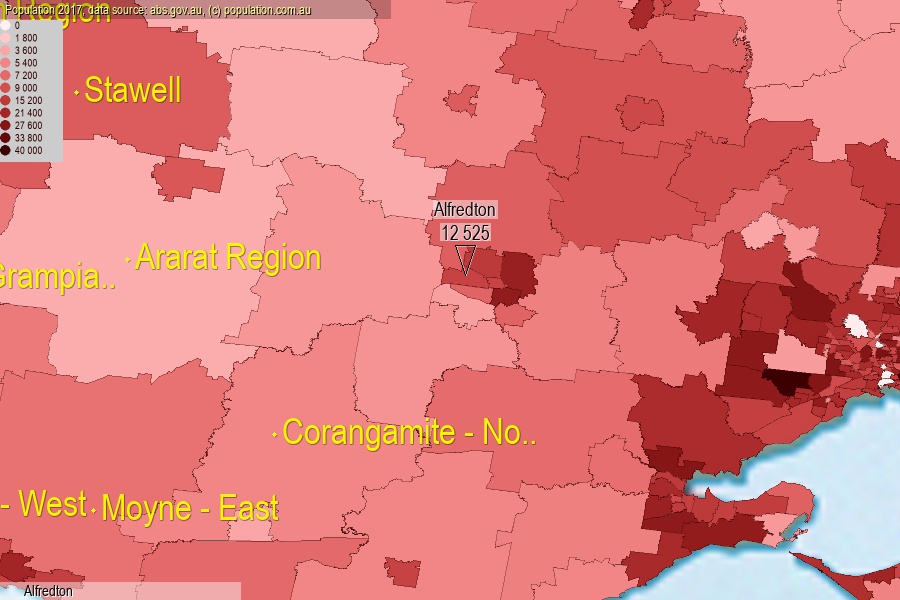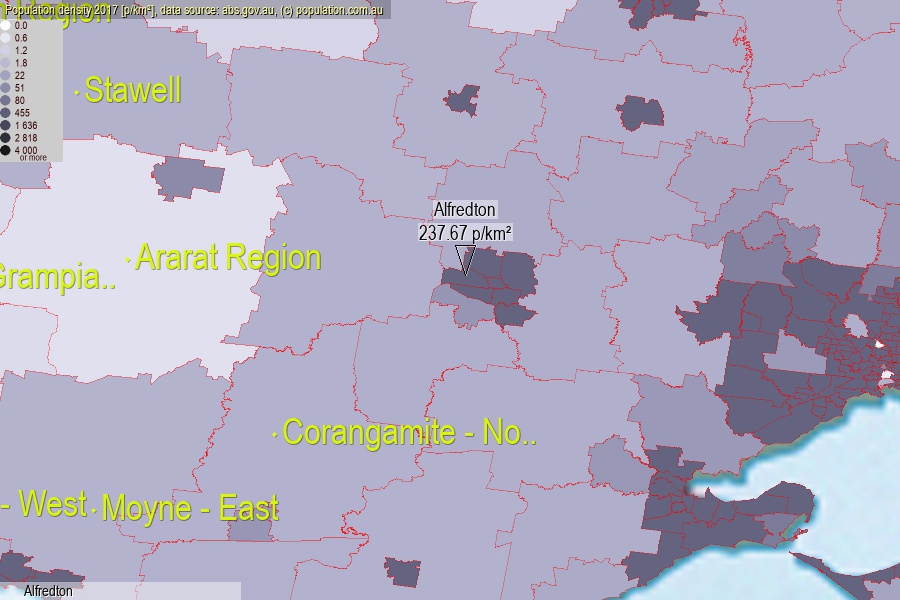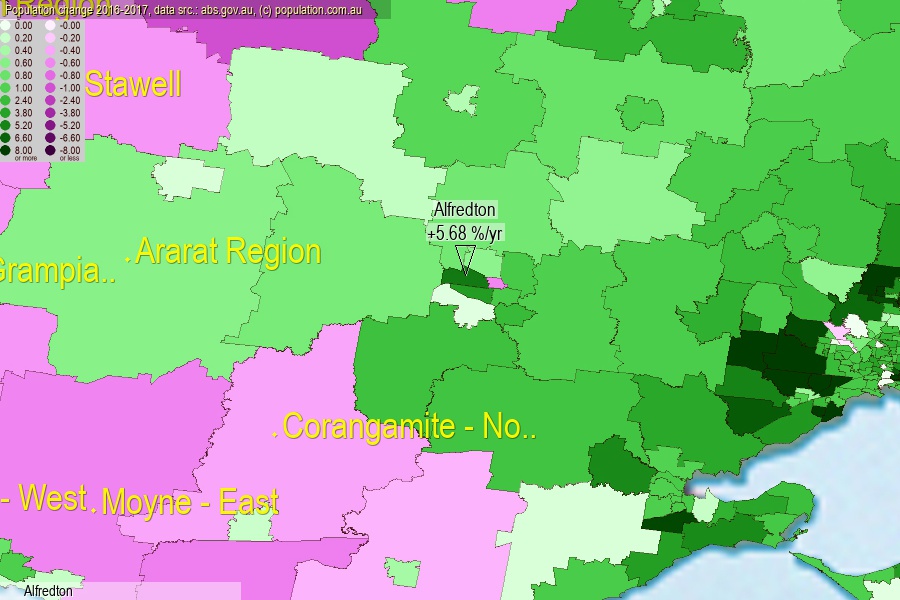 population.com.au
population.com.auLast official estimated population of Alfredton (as Statistical Area Level 2) was 12 525 people (on 2017-06-30)[2]. This was 0.05% of total Australian population and 0.195% of VIC population. Area of Alfredton is 52.70 km², in this year population density was 237.67 p/km² . If population growth rate would be same as in period 2016-2017 (+5.68%/yr), Alfredton population in 2025 would be 19 483. [0]



Click to enlarge. Alfredton is located in the center of the images.
Population [people], population density [p./km²] and population change [%/year] [2]
View borders » (new window) [4]
[1991-1992] +1.26 %/Yr.
[1992-1993] +2.11 %/Yr.
[1993-1994] +2.08 %/Yr.
[1994-1995] +2.17 %/Yr.
[1995-1996] +1.30 %/Yr.
[1996-1997] +2.58 %/Yr.
[1997-1998] +2.54 %/Yr.
[1998-1999] +3.45 %/Yr.
[1999-2000] +5.94 %/Yr.
[2000-2001] +4.81 %/Yr.
[2001-2002] +5.84 %/Yr.
[2002-2003] +3.30 %/Yr.
[2003-2004] +2.97 %/Yr.
[2004-2005] +2.59 %/Yr.
[2005-2006] +1.70 %/Yr.
[2006-2007] +4.04 %/Yr.
[2007-2008] +3.38 %/Yr.
[2008-2009] +4.70 %/Yr.
[2009-2010] +3.68 %/Yr.
[2010-2011] +7.07 %/Yr.
[2011-2012] +7.19 %/Yr.
[2012-2013] +7.22 %/Yr.
[2013-2014] +6.42 %/Yr.
[2014-2015] +6.78 %/Yr.
[2015-2016] +7.36 %/Yr.
[2016-2017] +5.68 %/Yr.
[0] Calculated with linear interpolation from officially estimated population
[1] Read more about SA2 and Australian Statistical Geography Standard (ASGS) on abs.gov.au
[2] Population data from Australian Bureau of Statistics (Population and density: 2017; change: 2016-2017)
[3] Digital Boundaries: Australian Statistical Geography Standard (ASGS) 2016.
[4] Border coordinates are simplifyed using Ramer-Douglas-Peucker algorithm.